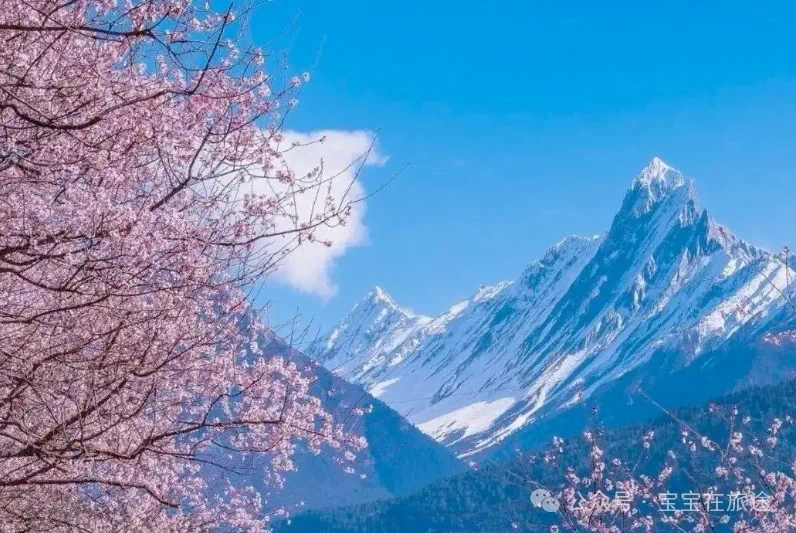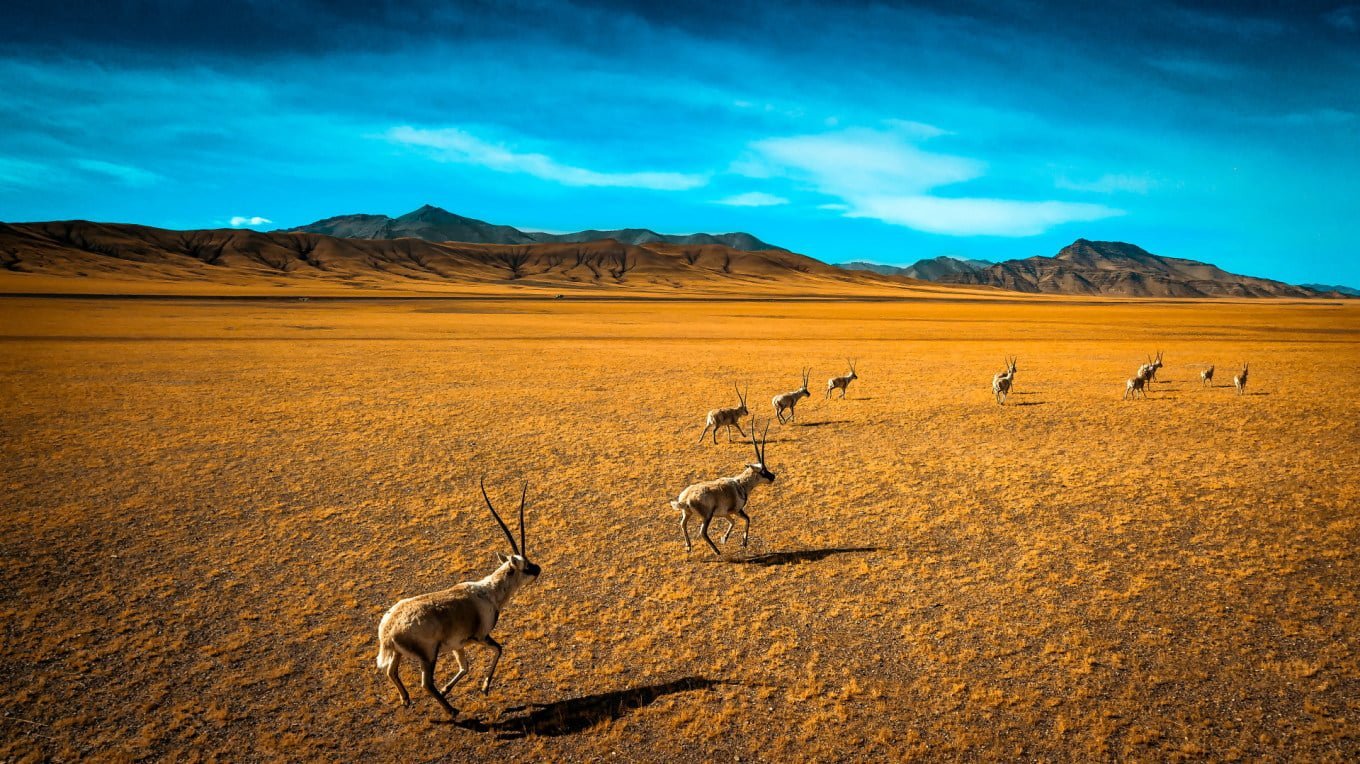Introduction to Bomi County
Bomi County, known in Tibetan as (སྤོ་མེས་རྫོང), is a picturesque area nestled in the southeastern part of Tibet, along the eastern bank of the Parlung Zangbo River. The county spans from 29.4° to 30.7° north latitude and 94.0° to 96.8° east longitude. It is crisscrossed by the National Highway 318, making it accessible, with distances of 636 kilometers from Lhasa, 230 kilometers from Nyingchi, and 217 kilometers from Changdu’s Baxoi County.
Bomi: The Ancestral Land with a Royal Legacy
Bomi, a region deeply rooted in Tibetan history, is known as “Bowo” (སྤོ་བོ།) in Tibetan, meaning “Grandfather” or “Ancestor.” It is celebrated as the birthplace of the first Tibetan king, Nyatri Tsenpo (གཉའ་ཁྲི་བཙན་པོ།). According to Tibetan historical texts like the “Yungbulakang Chronicle” and “The Origin of the Diu Religion,” Nyatri Tsenpo was born in Tibet’s Bomi to a local chieftain father and a mother named Momo Tsun (མོ་མོ་བཙུན།). This heritage has led to Bomi being revered as the “Ancestral Home of Tibetan Kings.”
The Tale of Kings and Conquests
During the reign of the eighth king, Tride Tsukten Tsenpo (གྲི་གུམ་བཙན་པོ།), a pivotal moment occurred when he was assassinated by his minister, Lolang (or Lolang Dazi, said to be from the mother’s side of the Twelfth clans). This event, recorded in the “Red Annals,” details a duel where Tride Tsukten Tsenpo was defeated and killed by Lolang. His sons, fleeing in different directions, found sanctuary in various regions, with one, Kyide Nyimagon, finding refuge and reverence in Bomi, eventually becoming a leader there.
Bomi’s Evolution into a Principality
Kyide Nyimagon’s descendants in Bomi established a principality in the Garu region, proclaiming themselves as Kings of Garu. They ruled over several tribes and regions, thereby forming what was known as the “Six Rivers and Mountains of Bomi,” a term that encompasses the various river basins and tribal areas under their control.
This narrative showcases Bomi’s transition from a royal birthplace to a region of political and military significance. Notably, in the 19th century, the Tibetan government recognized Bomi as the Garu Tribe, with appointed secular officials overseeing administration and taxation. However, resistance to this control led to conflicts, notably with a minister refusing to submit, leading to a Tibetan military campaign to quell the rebellion.
The Garu Tribe’s Legacy
The chiefs of the Garu Tribe, while nominally under the Tibetan government’s authority, often asserted their autonomy, highlighting the complex relationship between local and central powers in Tibetan history.
The Rich Heritage of Bomi
“Bomi,” translating to “ancestor” in Tibetan, reflects its deep cultural and historical significance. Various names, including Bowo and Bozong (ཉིང་ཁྲི་གྲོང་ཁྱེར་སྤོ་བོ་རྫོང་།), identified the region in ancient times. King Glang Darma (Ka-gnam-sde-pa) established the Bomi Dynasty here, uniting the Quzong, Yigong, and Qiongdu regions under a single rule in 1954. In December 1959, the formal establishment of Bomi County marked a new chapter in its storied history.
Today, Bomi County (波密县) is a vibrant community that includes three towns—Zhamu, Qiongdu, and Songzong—and seven townships. It covers an area of 16,748 square kilometers. As of the end of 2019, it boasts a population of 32,665 residents and has made significant strides in overcoming poverty, with its official exit from the list of impoverished counties in October 2018.

Administrative divisions in Pome County
Bomê County contains 3 towns and 7 townships.
| Name | Chinese | Hanyu Pinyin | Tibetan | |
|---|---|---|---|---|
| Towns | ||||
| Zhamo Town (Tramog) | 扎木镇 | Zhāmù zhèn | སྤྲ་རྨོག་གྲོང་རྡལ། | |
| Chumdo Town | 倾多镇 | Qīngduō zhèn | ཆུ་མདོ་གྲོང་རྡལ། | |
| Sumzom Town | 松宗镇 | Sōngzōng zhèn | གསུམ་འཛོམས་གྲོང་རྡལ། | |
| Townships | ||||
| Yi’ong Township | 易贡乡 | Yìgòng xiāng | ཡིད་འོང་ཤང་། | |
| Yupuk Township | 玉普乡 | Yùpǔ xiāng | གཡུ་ཕུག་ཤང་། | |
| Kangyul Township | 康玉乡 | Kāngyù xiāng | ཁང་ཡུལ་ཤང་། | |
| Dorjé Township | 多吉乡 | Duōjí xiāng | རྡོ་རྗེ་ཤང་། | |
| Shulmo Township | 玉许乡 | Yùxǔ xiāng | ཤུལ་མོ་ཤང་། | |
| Paggai Township | 八盖乡 | Bāgài xiāng | བྲག་སྐས་ཤང་། | |
| Gu Township | 古乡 | Gǔ xiāng | དགུ་ཤང་། | |
Geographic Features and Climate
Bomi County is characterized by its mountainous terrain and rolling hills, surrounded by majestic mountains, with the Parlung Zangbo and Yigong Zangbo river valleys at its heart. The region is home to numerous tributaries, covering an area of 4,549.6 square kilometers. The terrain slopes from east to west, with elevations ranging from 2,001.4 meters to 6,648 meters above sea level, averaging around 4,200 meters.
The climate in Bomi County varies significantly with elevation. Areas below 2,700 meters enjoy a subtropical climate, while regions between 2,700 and 4,200 meters experience a temperate and semi-moist highland monsoon climate. Above 4,200 meters, the climate becomes colder and more humid. Bomi County benefits from ample sunshine, with an average of 1,563 hours of sunlight annually, a frost-free period of 176 days, and average annual rainfall of 977 millimeters, making it a region with abundant water resources.
Discover Bomi County’s Premier Specialties
Nestled in Tibet, Bomi County stands out for its agricultural prowess, recognized as one of the eleven key commodity grain base counties in the region. It plays a pivotal role as a significant source of exported mushrooms, including matsutake and morels. The county has earned accolades for its commitment to peace, culture, and civility, receiving titles such as “National Model County for Peaceful Construction,” “National Culturally Advanced County,” and “National Civilized County.” On December 29, 2018, the State Ethnic Affairs Commission named it as part of the sixth batch of national demonstration areas for ethnic unity and progress.
Bomi’s Agricultural Bounty
The fertile lands of Bomi yield an array of crops such as highland barley, wheat, and peas, alongside a rich diversity of livestock including yaks, cattle, and sheep. Its mineral wealth encompasses copper, iron, tungsten, molybdenum, and alluvial gold. The county’s distinctive products, such as Guxiang honey, Duoji butter, and Sutong Sichuan pepper, renowned and trademarked as specialties, along with treasures like lacquer trees, walnuts, mulberries, and apples, distinguish the region. The medicinal plants sector flourishes with varieties such as gastrodia elata, notoginseng, lion’s mane mushroom, and poria, contributing to the local and traditional medicinal practices. The Yigong Tibetan knife, known for its craftsmanship, and the “Mount Everest Tea” are famed both locally and beyond.
Specialty Insights
Gastrodia Elata:
A prized specialty of Bomi, also known as “Gastrodia Tuber.” It thrives in damp, shaded forests, bearing no chlorophyll, with fleshy underground tubers. Tibetan medicine cherishes this plant for its neutral nature and sweet taste, offering remedies for ailments such as dizziness, headaches, facial paralysis, numbness, convulsions, hemiplegia, and pediatric convulsions. Gastrodia Elata is not only effective for calming, aiding sleep, and preventing seizures but also offers pain relief, especially for headaches caused by high blood pressure or concussion. It has a protective effect on cardiovascular systems, reducing blood pressure and peripheral vascular resistance, thereby enhancing blood flow and vessel dilation.
Lacquer Tree:
A deciduous tree reaching up to 20 meters in height, known for its latex-bearing nature. The small branches are robust, with compound leaves that are alternately arranged. It flowers in early summer, producing yellow-green flowers in mixed or unisexual forms. The natural lacquer, composed of urushiol, laccase, and gum, includes a balanced moisture content and traces of calcium, manganese, magnesium, potassium, sodium, silicon, organic acids, and glucose.
The lacquer hardens to a glossy, durable finish with excellent sealing, water, abrasion, acid, alkali, oil, heat resistance, and insulation properties. The wood, yellow and finely textured, is ideal for fine woodworking, while the fruit can be used to extract lacquer wax, and the seed kernel for oil extraction. According to Li Shizhen’s “Compendium of Materia Medica,” dry lacquer has medicinal properties that include healing injuries, reinforcing tendons and bones, nourishing the brain, stabilizing internal organs, and treating rheumatic pain, as well as being effective for blood in stool and urine.
Bomi County’s rich array of agricultural products, minerals, and specialty goods not only highlight its cultural heritage and natural bounty but also contribute significantly to the local economy and the well-being of its people. These specialties, deeply rooted in traditional practices and natural advantages, continue to draw interest and appreciation from across the globe.
Discovering Bomi County: A Treasure Trove of Unique Products and Stunning Landscapes
Bomi County’s Prime Agricultural and Cultural Achievements
Bomi County stands out as a pivotal agricultural county within Tibet, recognized as one of the 11 key regions for commodity grain production. It also plays a vital role as a major source of export mushrooms, including matsutake and morel mushrooms. Over the years, titles such as “National Advanced County in Peaceful Construction,” “National Advanced Cultural County,” and “National Civilized County” have honored Bomi. The State Ethnic Affairs Commission named it as part of the sixth batch of national demonstration areas for ethnic unity and progress on December 29, 2018.
Bomi County, a gem nestled in Tibet, is a haven of natural beauty and rich culture. Its diverse agriculture and unique products make it a must-visit for anyone looking to explore Tibet’s splendor.
Bomi’s Bounty: From Fields to Forests
Bomi’s lands are lush and productive. Farmers grow highland barley, wheat, and peas. Herders raise yaks, buffalo, and sheep. The mines yield copper, iron, and gold. But Bomi’s real treasures? Its specialties. Guxiang honey, Duoji butter, and Sutong Sichuan pepper stand out, along with lacquer trees, walnuts, and apples. Medicinal plants like gastrodia elata and Panax notoginseng thrive here, too. Don’t forget Bomi’s crafts—Yigong Tibetan knives and “Mount Everest Tea” are renowned far and wide.
Unique Finds in Bomi
- Gastrodia Elata: A medicinal marvel, known locally as “Tianma”. It grows in shaded forests and helps with blood pressure and calming nerves.
- Lacquer Tree: More than just a tree, its sap creates durable lacquer. The wood, fruit, and seeds are all valuable.
- Poria Cocos: This fungus, found on pine roots, boosts health with its triterpenes and polysaccharides.
- Yigong Tibetan Knife: A symbol of Bomi’s metallurgical skill, these knives are as durable as they are beautiful.
Bomi’s Natural and Historical Sites
Bomi isn’t just about products; it’s a land of breathtaking sights and deep history. Home to 42 glaciers, including the majestic Midui Glacier, and the Parlung Zangbo Grand Canyon, Bomi offers natural wonders at every turn. Historical sites like the Galang King’s Palace and the Yigong National Geological Park tell tales of the past.
Must-Visit Locations
- Zhuolong Gully: A sacred “tree burial” site just 6 kilometers from Bomi.
- Lake Heart Island: Offers a mix of beauty, culture, and the Dobear Festival.
Travel Tips for Bomi Adventures
Visiting Bomi? Plan wisely. Avoid the rainy season between July and August. Spring brings blossoms in a riot of colors. Essential tips include packing hiking boots, an ID card, and permits for certain areas. Don’t forget dry food and basic medical supplies.
Getting Around: Bomi’s lifeline is the Sichuan-Tibet Highway, connecting it to major towns and cities. Whether you’re flying into Nyingchi Mainling Airport or taking a bus from Chengdu, access is easy.
Eating and Staying: Bomi’s cuisine is a delight. Try local dishes like dried beef and Zanba. Hotels and guesthouses provide comfortable stays, with traditional homestays for an authentic experience.
Souvenirs and Specialties: Bring home a piece of Bomi. Yigong Tibetan knives, wooden bowls, and local medicinal plants like gastrodia elata are perfect reminders of your journey.
Bomi’s Endless Charms
Bomi County is a blend of natural beauty, cultural richness, and unique products. Its strategic location makes it a gateway to Tibet’s wonders. For history buffs and nature enthusiasts, Bomi is a destination that keeps on giving. Discover its treasures and let Bomi’s charm enchant you.



